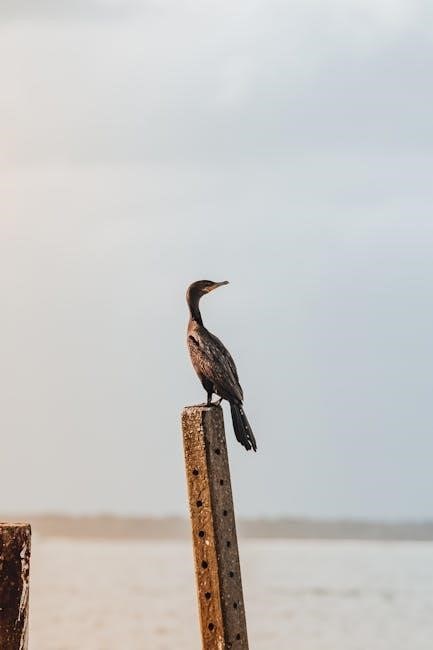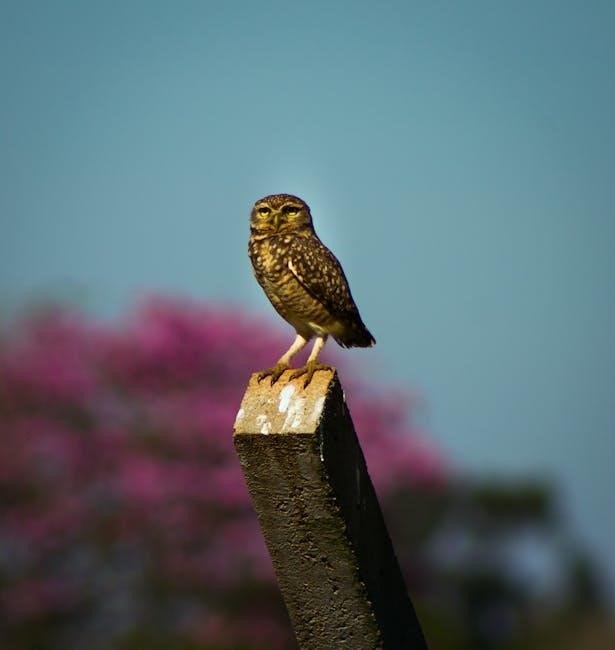Totem pole animals have significant meanings, often symbolizing guardian spirits, with each figure having special importance, as seen in Native American traditions and cultures, with various animals depicted.
Definition of Totem Poles
A totem pole is a large wooden sculpture created by Indigenous peoples of the Pacific Northwest in North America, consisting of multiple carved figures stacked on top of each other. These figures often depict animals, mythical creatures, or ancestral spirits, and are typically made from a single tree trunk. The construction of totem poles is a complex process that requires great skill and craftsmanship, with each pole being unique and having its own distinct character. The definition of totem poles is closely tied to the cultural and traditional practices of the Indigenous peoples who create them, and they are often used to tell stories, commemorate events, and honor ancestors. The carvings on the pole are carefully designed to convey meaning and significance, and the pole as a whole is considered a sacred object. Totem poles are an important part of Native American culture and history.
Importance of Totem Animals in Native American Tradition
Totem animals play a vital role in Native American tradition, symbolizing spiritual connections and guiding principles. Each animal is believed to possess unique qualities and characteristics that are revered and respected. The importance of totem animals lies in their ability to provide guidance, protection, and wisdom to individuals and communities. In Native American culture, totem animals are often associated with specific teachings and lessons, and are used to convey moral and ethical values. The animals are also believed to possess healing properties and are used in traditional medicine and rituals. The significance of totem animals is deeply rooted in Native American spirituality and is an integral part of their cultural heritage. The animals are considered sacred and are treated with great respect and reverence, and their importance is passed down from generation to generation through stories and traditions. Totem animals are an essential part of Native American identity.

Common Totem Pole Animals and their Meanings
Various animals are depicted, including alligators, eagles, and wolves, each having unique symbolic meanings and significance, as seen in Native American cultures and traditions always.
Alligator Meaning
The alligator is a symbol of stealth and fight, often representing adaptability and survival, as seen in its ability to thrive in different environments, making it a respected animal in Native American cultures and traditions.
In the context of totem pole animals, the alligator is believed to possess strong spiritual significance, with its image often used to convey messages of resilience and determination, as well as the importance of being grounded and connected to one’s surroundings.
The alligator’s meaning is also associated with the concept of protection, as it is known to fiercely defend its territory and young, making it a powerful symbol of guardianship and responsibility, with its presence on totem poles serving as a reminder of the importance of safeguarding one’s community and heritage.
Overall, the alligator’s meaning is complex and multifaceted, reflecting the animal’s unique characteristics and behaviors, and its significance in Native American cultures and traditions is undeniable, with its image continuing to inspire and educate people about the importance of respecting and preserving the natural world.
Question and Answer Section on Totem Poles
A frequently asked question is what a totem pole signifies, with the answer being that it represents a tribe, clan, or family, often featuring various animals and symbols that hold special meanings.
The questions and answers section on totem poles provides insight into the significance of these sculptures, with topics ranging from the history of totem poles to their cultural importance.
In this section, one can find answers to questions such as what the different animals on a totem pole represent, how totem poles are made, and the role they play in Native American traditions and ceremonies.
The question and answer section is a valuable resource for those seeking to learn more about totem poles and their meanings, offering a wealth of information and insights into the cultural and historical context of these intricate sculptures, and providing a deeper understanding of their significance and importance.
This section is essential for anyone interested in learning about totem poles and their role in Native American culture.

Totem Pole Symbolism and History
Symbolism and history are deeply connected to the Native American culture and traditions, with each totem pole figure having special significance and meaning always.
Totem Pole Symbolism
Totem pole symbolism is a complex and multifaceted aspect of Native American culture, with each figure and image conveying a specific meaning and message. The use of animals, mythical creatures, and ancestral spirits on totem poles serves as a way to communicate important teachings and values. The placement and arrangement of these figures also hold significance, with the top figure often representing the most important or revered spirit. The symbolism of totem poles can vary depending on the tribe and region, but overall, they represent a deep connection to the natural world and the spiritual realm. The intricate carvings and designs on totem poles are a testament to the skill and craftsmanship of Native American artists, and the symbolism they convey continues to inspire and educate people to this day, with a rich cultural heritage and history.
Totem Pole History
The history of totem poles dates back to the indigenous peoples of the Pacific Northwest, with evidence of their existence found in the region’s rich cultural heritage. The word “totem” is derived from the Ojibwa word “ototeman”, meaning a symbol or emblem of a tribe or family. The earliest known totem poles were created by the Native American tribes of the region, including the Haida, Tlingit, and Tsimshian. These poles were typically carved from cedar wood and featured intricate designs and figures, often depicting animals, mythical creatures, and ancestral spirits. The history of totem poles is closely tied to the region’s indigenous peoples, with each pole serving as a testament to their skill, craftsmanship, and spiritual connection to the natural world. The poles have been an important part of Native American culture for centuries, with their history! and significance continuing to be celebrated and respected today, with a deep understanding.

Native American Tribes and Totem Poles
Native American tribes, including Haida, Tlingit, and Tsimshian, create totem poles, symbolizing their heritage and traditions, with each tribe having unique cultural practices and meanings, as seen online.
Tribes of Northwest Indians
The tribes of Northwest Indians, including the Haida, Tlingit, Bella Coola, Tsimshian, Kwakiutl, and West Coast tribe, are known for their expertise in carving and constructing totem poles, which are an integral part of their cultural heritage. These tribes have a rich tradition of storytelling and passing down their history and legends through the intricate carvings on the totem poles. The totem poles are not only a work of art but also a symbol of the tribe’s identity and a way to honor their ancestors and the natural world. The Northwest Indians have a deep respect for the animals and spirits that are depicted on the totem poles, and each figure has a specific meaning and significance. The tribes’ connection to the land and their ancestors is reflected in the totem poles, which are a testament to their skilled craftsmanship and artistic expression. The totem poles are a vital part of the Northwest Indians’ cultural identity.
Power Animals and Totem Poles
Power animals play a significant role in the context of totem poles, as they are believed to possess spiritual powers and guidance. According to Native American tradition, each person is connected with nine different animals that will accompany them through life, offering protection, wisdom, and strength. These power animals are often depicted on totem poles, serving as a reminder of their importance and significance. The animals are chosen for their unique characteristics, such as courage, agility, or wisdom, and are believed to impart these qualities to the individual. The connection between power animals and totem poles is deeply rooted in the spiritual and cultural practices of the Native American tribes, and is still observed and respected today. The power animals are an integral part of the totem pole’s symbolism, and their presence is meant to inspire and guide individuals on their life’s journey, with each animal having its own distinct energy and meaning.

on Totem Pole Animals and their Meanings
Totem pole animals have unique meanings, symbolizing spirits, guiding individuals, with each figure having special importance, in Native American cultures and traditions always.
